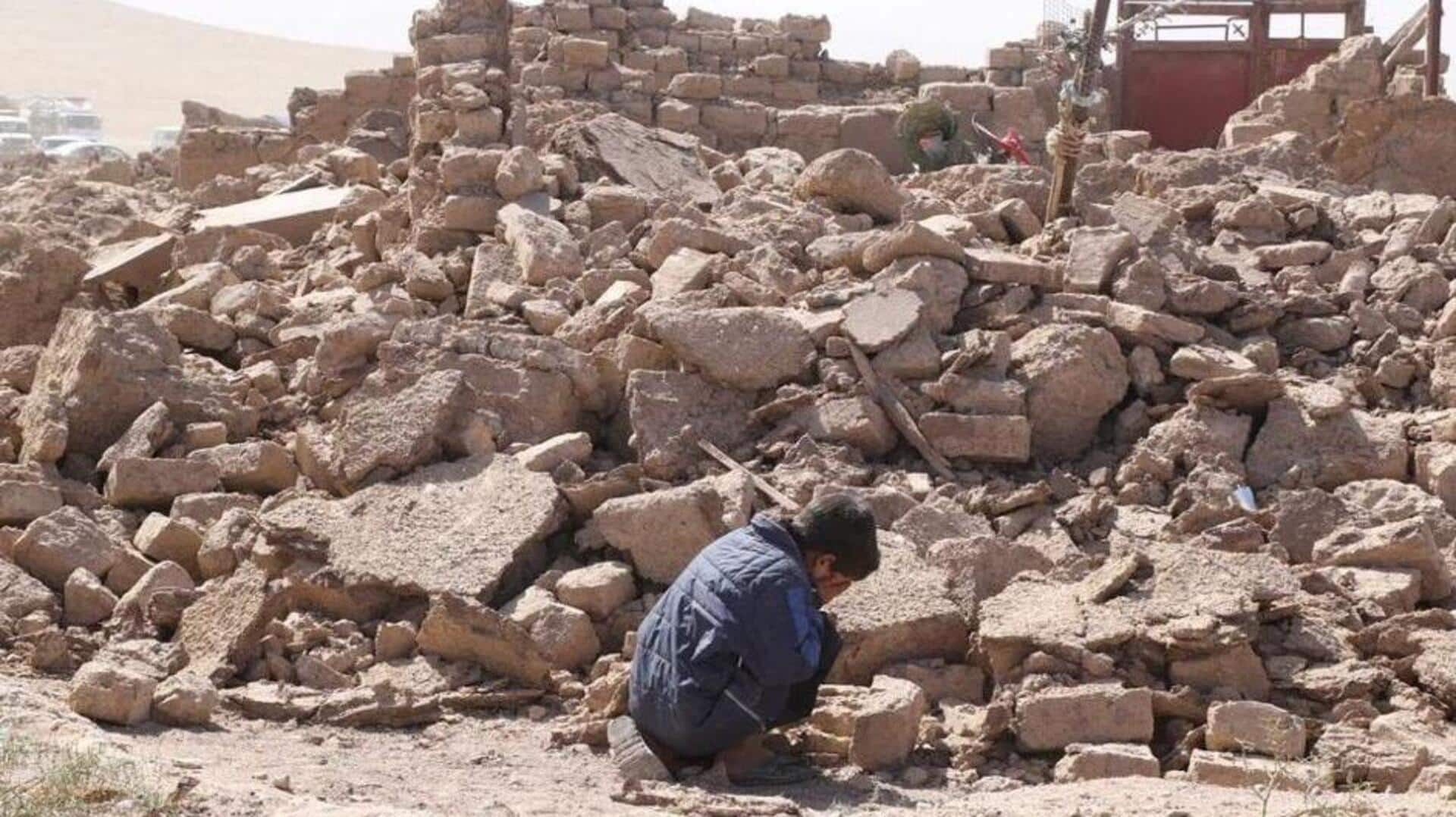When a 6.0-magnitude earthquake struck eastern Afghanistan on Monday, entire villages crumbled within seconds, leaving nearly 1,100 dead or injured. What made this disaster especially deadly was not just
the tremor’s strength, but a perfect storm of factors: shallow seismic depth of about 8 km, fragile mud-brick homes, landslide-prone terrain, and a country already struggling with poverty, weak infrastructure, and limited emergency response systems.
Shallow quakes transfer seismic energy directly to the surface, causing far more destruction than deeper tremors of the same magnitude. This one hit with brutal force shook communities perched on fragile slopes in minutes.
Understanding why so many lives were lost means looking beyond the quake itself. Let us look into the human and natural factors that turned the event into a humanitarian catastrophe.
Buildings That Could Not Withstand The Shock
Across eastern Afghanistan, most homes are built from mud bricks, stone, and timber, constructed over decades by hand, often without formal engineering or seismic safety measures. When the earthquake struck, these structures stood no chance.
Walls crumbled, roofs caved in, and entire villages were reduced to heaps of rubble. Families sleeping inside were buried instantly, with survivors frantically digging through debris using shovels, sticks, or bare hands.
This is why earthquakes of similar strength in other regions with better infrastructure kill far fewer people. In Afghanistan, the quake did not just shake the earth—it shattered homes that were never designed to endure it.
How Geography Magnified The Tragedy
Eastern Afghanistan is mountainous, with isolated communities often connected by narrow, winding roads. Landslides triggered by the earthquake—and worsened by recent flash floods—cut off entire areas, blocking rescue teams for hours or even days.
In many villages, survivors had to carry the injured on foot across unstable terrain before they could reach medical care. Helicopters eventually joined the rescue efforts, but by then the critical window for saving many lives had already closed.
A Region Prone To Seismic Fury
Afghanistan sits in one of the world’s most seismically active zones, where the Indian and Eurasian tectonic plates collide. The region has endured frequent earthquakes for centuries, including deadly ones in 2022 and 2023 that killed thousands.
Each quake leaves physical scars—damaged homes, weakened infrastructure—and psychological wounds, creating a population constantly on edge but rarely equipped to respond to the next disaster.
Humanitarian Crisis Meets Natural Disaster
Even before the quake, Afghanistan faced overlapping crises: economic hardship, strained healthcare systems, limited international aid, and political instability. Hospitals lack equipment, trained personnel, and emergency stockpiles.
When the earthquake hit, many medical facilities were overwhelmed within hours. Surgeons performed operations without adequate anesthesia, families waited outside packed clinics, and shortages of blood, medicine, and shelter compounded the suffering.
Children, Women, And the Elderly Hit Hardest
The timing of the quake—striking at night while families slept—left the most vulnerable with little chance to escape. Children and the elderly, often inside mud-walled homes that collapsed instantly, accounted for a disproportionate share of the casualties.
For many families, multiple generations living under one roof meant entire households were wiped out in seconds. Survivors described villages where “every home has dead bodies,” underscoring the scale of loss in tightly knit rural communities.
The Role Of Landslides And Secondary Hazards
Earthquakes in mountainous areas trigger landslides, and this one was no exception. Hillsides gave way, burying roads, farms, and homes. Some areas faced the double disaster of blocked rivers and the threat of flash flooding, as landslide debris temporarily dammed waterways.
These cascading effects not only killed directly but also hampered rescue operations, isolating survivors at the very moment they needed help the most.
Limited Early Warning and Preparedness
Afghanistan lacks a nationwide early warning system for earthquakes. Even if tremors are detected seconds before they strike, there is no infrastructure to relay alerts to rural populations or guide them to safety.
Preparedness drills, public awareness campaigns, and school safety programmes—common in earthquake-prone countries like Japan—are virtually absent. As a result, people often don’t know the safest places to shelter or the quickest evacuation routes during a quake.
Rescue Efforts Under Enormous Strain
In the aftermath, authorities deployed military helicopters, medical teams, and volunteers to affected regions. Aid groups set up temporary shelters and distributed food and water. Yet, the sheer scale of the disaster and the remoteness of many villages meant response efforts were stretched thin.
Reports indicated some communities waited more than 48 hours for meaningful assistance—a delay that cost lives as the injured succumbed to treatable wounds and exposure.
How To Ensure Less Damage In The Future
The earthquake highlights urgent needs for disaster preparedness, safer construction, and better infrastructure.
Stronger Buildings: Simple, low-cost seismic reinforcement techniques can dramatically reduce collapse risk. Countries with similar income levels have shown that safer schools and homes are possible with community training and small engineering upgrades.
Early Warning Systems: Even seconds of advance notice can save lives if people know to take cover or evacuate.
Emergency Stockpiles and Training: Pre-positioned medical supplies, rescue equipment, and trained local responders can bridge the gap before national or international aid arrives.
Infrastructure Investment: Roads, bridges, and communication systems must be built to withstand both earthquakes and landslides, ensuring access during crises.
Creating Resilience Is The Key
Ultimately, the earthquake was so deadly because it struck a perfect storm of vulnerabilities—fragile homes, mountainous terrain, night-time timing, limited preparedness, and a country already in humanitarian crisis.
In places like Afghanistan, disasters rarely come alone. They pile on top of poverty, conflict, and weak governance, turning natural hazards into human catastrophes.
As rescue efforts give way to rebuilding, the challenge will be not just to reconstruct homes, but to create resilience — so that the next quake does not bring the same scale of tragedy.














